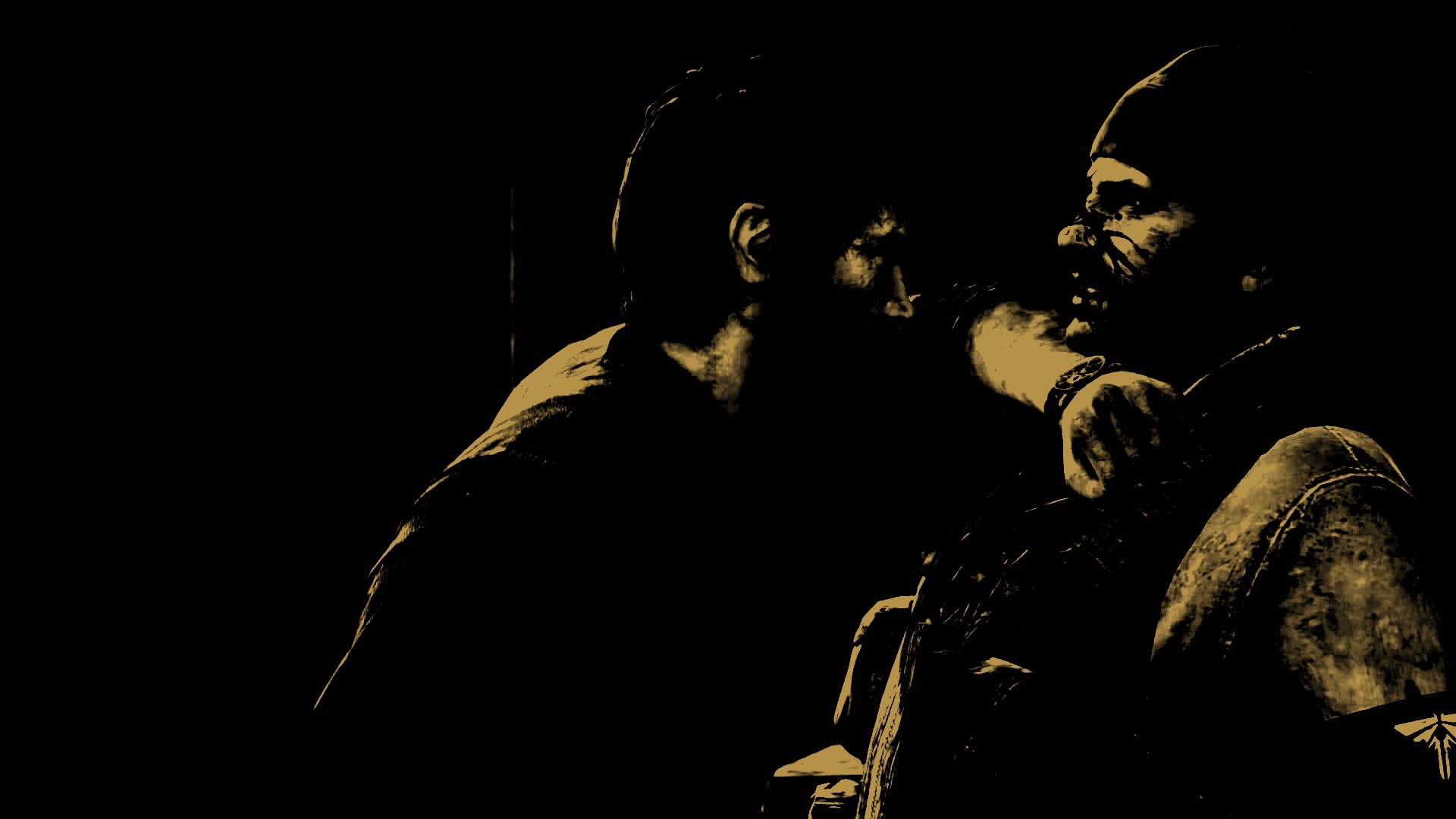
Violence in videogames is so naturalized that it no longer scans as violence. In some ways this parallels the decentralized, invisibilized nature of videogame production, the end result of which is far removed from the violence inflicted on the laborers involved at every step of that production; and at any rate this is well outside the scope of the hoary videogame-violence argument. This kind of violence calls into question the existence of the entire medium; the violence on the screen, both in comparison and on its own merit, is meaningless and therefore much safer to endlessly argue about.
It doesn’t have to be that way. Violence is one of the most powerful tools available to a storyteller. But videogames are uniquely gifted at grinding their merits into dust whether by sheer length or bloody repetition. The exploding heads in the Resident Evil 2 remake popped with enjoyable crunch and friction but scandalize they did not; and if those didn’t shock you, the finely tooled headshot machine of Destiny has no chance. If violence is impact, then very little you do in a videogame qualifies as violence. You can get used to anything once it becomes routine. Signifiers of increased fidelity like gore effects and corpse physics were back-of-box selling points twenty years ago.
The Last of Us, for all its faults, tried to give violence an arduous physicality, all scrambling and grasping. It fought the demands of variety and length that are expected of blockbuster games to retain that laboriousness; of course it couldn’t, but it was one of the few games to even try to present person-on-person violence as something stomach-turning and horrific.
Another thing expected of blockbuster games, though, is that they never end: thus the upcoming The Last of Us Part II, which discards the father-surrogate daughter dynamic of the first game for a straightforward revenge narrative. An early trailer for the game improbably raised a bit of moral panic around its violence, which is more a sign that we’re terribly bored,+ than any credit to the trailer’s eneverating, overfamiliar “realism.” The detached, meticulously rendered violence carries no visceral charge; the harder it works to impress its callousness on the viewer (breaking a limb here, sending an arrow through a face there) the more dreary and strained it becomes.
The Last of Us is ultimately characteristic of the failure of imagination at play here. The thinking is that to impress upon the player the gravity of a brutal story all one has to do is shove her face into a mess of literal physical brutality. But violence is more than a hammer splintering a forearm. Violence can be expressionistic; it can be beautiful.
If we look at violence as an expressive tool, certain games come to mind over the past ten years: Detention, with its wonderfully macabre and thoroughly thematic survival-horror puzzles, Nier: Automata, with its careful lashings of bright, ever-so-human blood, Observer, whose world is bitcrushed and macroblocked by hypercapitalism, and Hotline Miami, which makes violence immediate and overwhelming no matter how many times the player finds herself running a level.
But the pixelated Liveleak horror of Kane & Lynch 2’s headshots is maybe the most indelible and deliberate choice ever made in rendering representational digital violence. Videogames offer more, more, more—fidelity, power, map size, particle density, on and on, but the choice to obscure the aftermath of a headshot stands out for the implication that there is something awful on the other end of all that aiming and firing.
Of course the player will become inured to this effect. It’s a videogame. Kane & Lynch 2 piles on horror after horror but its shock-theater tactics become familiar in their own way, and it’s even a lot shorter than most action games. Big-budget videogames are very good at repetitive loops of violence but again—repetition necessarily softens violence. It’s not the years of numbing, routine physical and emotional abuse I remember from my own life. The specifics of those years are pointless. They melt into the mist my brain conjured to spare me what it could. It’s the first time it happened that I still remember. The shock of it. That shock quickly became the daily order of things. It opens a door you never realized was there and may never be lucky enough to close.
So, yes, it’s the small, deliberate moments of violence that stick with me; the portrayals of violence that are specific enough to ring true and gone before you can make sense of them, like the frayed, unfurling aesthetic of Lucah: Born of a Dream or the annihilating lust of Cyberqueen++. This kind of violence is obscure and difficult to shake, not subservient or obsequious to the player but respecting her enough to confound and provoke her.
Violence in fiction can make meaning in a way real-life violence can’t; it can express where real violence merely destroys, even if it destroys for a just and good reason. But fictional violence loses potency when we treat it as if it has the power of real violence, whether it’s an artist coopting the reality of sexual assault to weigh down their own work with a gravity it is entirely unable to withstand or a critic arguing that violence in fiction is equally as destructive or even more worthy of attention as the harm done by that fiction’s authors.
///
+ And strangely unable to cope with the well-worn generic mode of “person avenging their dead lover” when that person is a woman. Again; Naughty Dog’s own real-life abuses of power are a lot more materially harmful than anything in their videogames.
++ It's worth noting that there are allegations of abuse against Cyberqueen's creator as well.
***
Astrid Rose is a writer & critic. Follow her on Twitter.